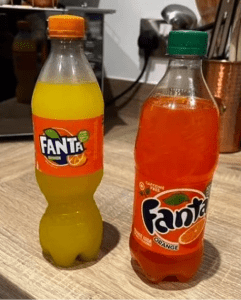Have you ever had a McKroket for lunch? Although you are likely to have grabbed a bite from McDonaldŌĆÖs on more than one guilty occasion, unless you happen to be in the Netherlands for your meals, you have probably never had the McKroket. The reason is product adaptation, a crucial component of a successful international companyŌĆÖs strategy, whether you are exporting products or services or establishing a presence in a foreign market. Read more to find out what it is, how itŌĆÖs done and how to make it part of your global market plan.
What is product adaptation?
When IKEA expanded to the Japanese market, they found that it was not enough merely to localise product names and instructions. They had to adapt the products themselves to make them compatible with the small indoor living spaces of the Japanese as well as the Japanese way of using furniture to maximise the efficiency of indoor areas. Trying to enter the American market, they found the opposite challenge; Americans favoured the ŌĆ£go largeŌĆØ option on the menu of life, and so beds, cupboards and even drinking glasses had to be made larger to fit with an expansive lifestyle.
Product adaptation is quite simply everything that you do to the product as part of a global marketing strategy to adjust it and make it more appealing and suitable for a specific market, including tailoring it to local needs and tastes. This ranges from making statutory adjustments and meeting specific market regulations for labelling and information to adjusting the design and the actual composition of the product itself. For instance, beauty products like shampoo are reformulated for tropical climates to cope with the greater humidity of the target market.
An export strategy that hits home
Sometimes a product coming from a foreign market is best when it is not tampered with but rather presented in its original form. Many products with deep roots in culture and tradition are best left as they are, while some products instead benefit from standardisation. For example, the distinctiveness of a pungent French cheese lies in its unaltered French identity, appealing to those who favour such authenticity.
However, the approach that works for one product may not work for another. McDonaldŌĆÖs is known as the master of standardisation: you can walk into a McDonaldŌĆÖs and order a Big Mac and it will taste consistently the same worldwide.
But McDonaldŌĆÖs also localises some menu items to cater to regional tastes. In addition to the McKroket in the Netherlands, in India, you can get the Dosa Masala Burger, in Malaysia the Mango McFlurry, in Italy the cheese and tomato-filled Panzerotti, in Hong Kong a seafood range of Ebi Burgers ŌĆō the list goes on and on. McDonaldŌĆÖs skilfully balances global consistency with local adaptation, tailoring its offering to meet local tastes and traditions.
When the product changes
A more radical form of product adaptation, similar to IKEAŌĆÖs approach in the Japanese and American markets, involves changing the product itself.
An example of this that consumers have debated fiercely about online, dividing into the US or the UK camp, is the difference between Fanta as sold in the USA and Fanta as sold in the United Kingdom.

As the Daily Mail article goes on to explain, both the colour and the ingredients differ. The US version contains more sugar, no orange juice and artificial colourings, while the UK version uses concentrated orange juice. The UK version is adapted not only to the British taste but to the British tax regime: the British government introduced a sugar tax in 2017, making a product with higher sugar content more expensive. In order to stay competitive and minimise the impact of such taxes, the Coca-Cola Company uses less sugar in its UK products.
Awareness of how local regulations and tax systems could impact certain products or ingredients is a key part of adapting a product for a local market. Thorough market research must therefore be first on the agenda to understand what needs to be changed for a target market as well as what should remain the same. LetŌĆÖs take a closer look at other key elements of product adaptation.
Key elements of product adaptation
There are at least 7 key drivers you need to consider when deciding if product adaptation is necessary and desirable.
Regulation
Market-specific requirements often dictate labelling, declarations of conformity and product instructions ŌĆö you can read more about it in this article on the linguistic requirements for export. But labelling only scratches the surface. These regulations can extend beyond product packaging to affect the actual content of the product. For example, in the USA, certain food additives are allowed that may not be allowed in Europe and vice versa, necessitating adjustments to the product formulations to meet local regulatory standards while maintaining product integrity.
Physical environment
Some products are naturally more suited for certain markets, while others might need a tweak or an adjustment of some kind based on the physical environment of the target market. Cars and other vehicles, for example, might need modification to suit the climatic conditions of a particular geography. In the Middle East, vehicle filters and clutch systems are adapted for hot, dusty conditions. In contrast, in the Nordic market, electric cars benefit from features like seat warmers and battery warmers that provide safety and comfort during the long, cold, dark winters.
Infrastructure
Considerations for physical products also include storage needs and logistics. How good is storage capacity in the target market? If it is frozen food, for example, are freezers generally available and can your product be shipped in lorries with freezer boxes?
Here, we can also return to the size issue that IKEA faced: some consumer markets like to buy in bulk and do their shopping less frequently, such as American consumers. As a result, it makes sense to have large packaging that can fit more of the product inside or multi-packs so that several items can be purchased in one go. In other markets, not least developing markets, purchasing power is relatively weaker, and so consumers tend to prefer small units. Here, it makes sense to pack even low-cost products such as chewing gum or razors into single-item packaging to lower the buying threshold for the consumer.
Internet
For online products or services, the quality of the internet infrastructure is paramount. Why did Facebook launch their Facebook Lite version? Because it ensures accessibility for users in countries with lower internet connectivity.
Likewise, having a website equipped with amazing functionalities and offerings loses value if users are forced to endure long loading times. GoogleŌĆÖs research has found that 53% of mobile users will abandon a webpage if it does not load within 3 seconds, despite the average load time on 4G networks being 14 seconds! Therefore, optimising your website to ensure rapid loading times is crucial, particularly if you want to align with the internet capabilities of your target market.
Culture and consumer preferences
Just as McDonaldŌĆÖs tailors its menu to fit in with local preferences, Starbucks has also adapted its products to suit local cultural and consumer preferences. In Japan, understanding the significant role tea plays in Japanese culture, Starbucks decided to enrich its menu with an array of tea options, including a matcha-flavoured one as well as various green teas.

In addition, Starbucks embraced the significance of the Japanese Cherry Blossom Festival by introducing pink-coloured drinks, cups and merchandise, aligning their brand with the festivalŌĆÖs cherry-pink colour theme. Not only did this tap into a unique element of Japanese culture, but it also appealed to the Japanese consumersŌĆÖ preference for special and limited-edition products, which can help drive sales.
Competitors and corporate culture
Before deciding to enter a new market or not, the first question naturally is: what is currently being offered there? If an existing product already satisfies consumer demands in a way that poses a challenge to your competitive advantage, then you need to think very carefully about your approach.
Product adaptation should be executed with precision by accounting for the existing market landscape and determining how your product could fill a gap in the market.
Such a strategic alignment depends on your corporate culture: is there a proactive willingness to conduct thorough market research? Does your team possess the necessary skills and abilities to make the necessary changes and tweaks? Do you need to bring in outside expertise or further training? Addressing these questions is fundamental to formulating a successful export strategy.
Language
Another factor that plays a pivotal role in the global expansion of a business is the question of language. A study by Aston UniversityŌĆÖs Business School into 415 UK SMEs from different sectors illustrates how important the language element is to a successful export strategy. The report made it clear that ŌĆ£… SMEs making use of language capabilities are 30% more successful in exporting than those who do not.ŌĆØ
Navigating the language requirements for exporting involves everything from translating regulatory documents and compliance statements to the wording on the product packaging and marketing materials. For digital products, such as an app, it may be necessary to consider user or UX localisation. This entails the adaptation of the user experience to local expectations in terms of language, culture, norms and formats, as well as offering products suited to the local audience.
Every step of the product way is infused with linguistic considerations, and mistakes can cost a company dearly. IKEA exemplifies the strategic use of language to resonate with local consumers, notably through their marketing campaign in Malaysia that cleverly integrated wordplay in the local Hokkien dialect into their product marketing content.
The four areas of product adaptation
In substance, the various considerations for entering a new market can be roughly divided into four areas of adaptation: Statutory, preference, aesthetic and function.
Statutory adaptation is the changes that you need to make to comply with regulatory and legal requirements for the target market, such as safety features and additives.
Preference adaptation includes those modifications made to better align with the local marketŌĆÖs tastes and preferences, such as colour, taste, texture and range of product choices.
Aesthetic adaptations, while also falling under preference adaptation, hold distinct importance. Prioritising the way a product looks is not merely a nice thing to do; it is a crucial consideration if you want to outperform your competitors. As seen with Starbucks, Japanese consumers prefer products that are neat and visually appealing, so aesthetic changes are an effective way to build a connection to Japanese consumers.
Functional adaptation refers to adjustments in how a product works to ensure it meets the specific needs of the target market more effectively. Examples include Facebook Lite optimising performance for regions with limited internet, changes in packaging size for convenience or additional features like battery heaters for cold climates.
The ultimate global market strategy always starts with considering the target consumer and working your way backwards to determine what needs to be done at every step of the way to make new consumers choose your product.
Start with market research and the considerations outlined in this article, and it can mean the difference between selling a product that collects dust and one that flies off the shelves.




